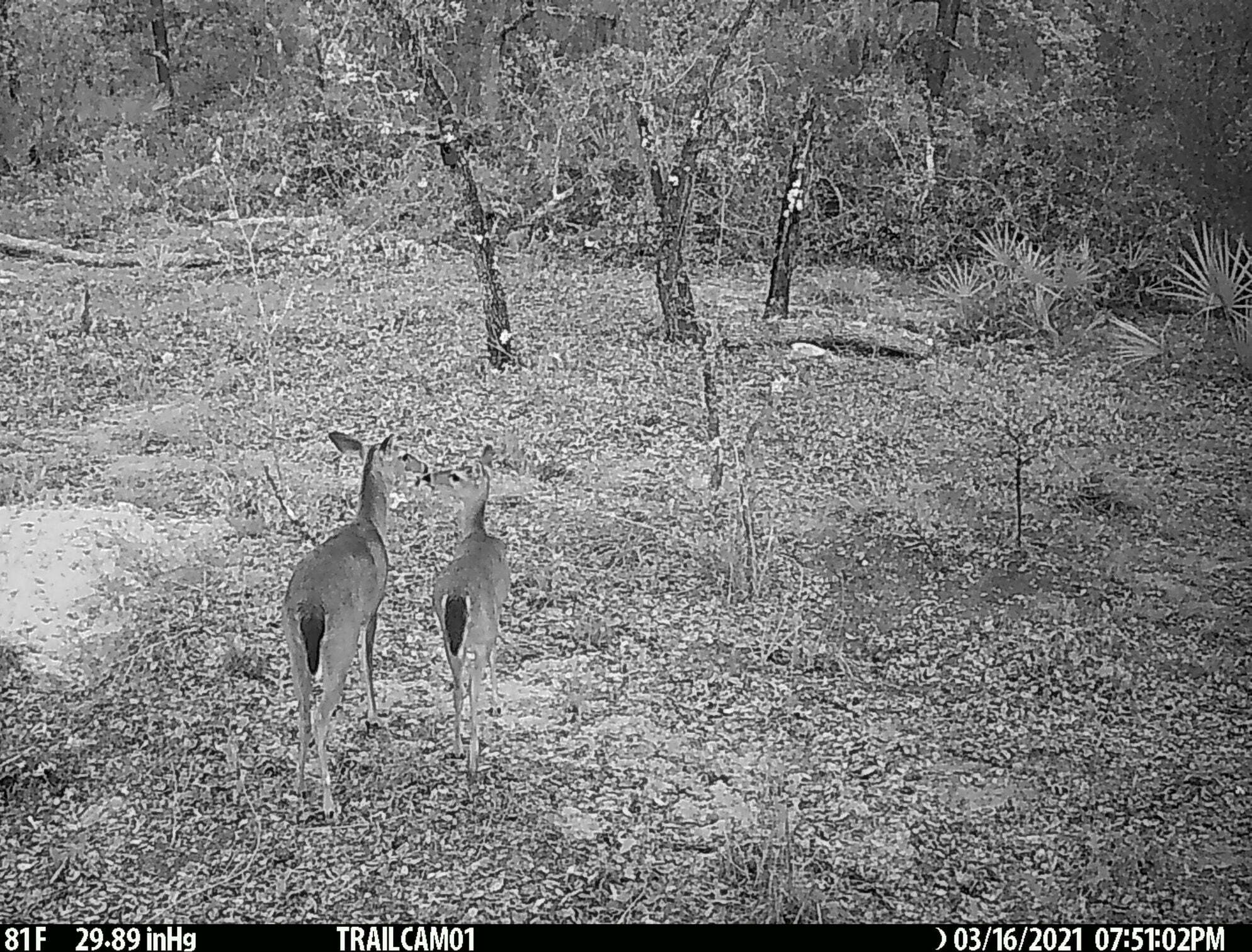As part of an ongoing life study of the federally protected Scrub Plum (prunus geniculata), Johnny Butterflyseed has captured, in the form of digital images, predation of Scrub Plum drupes by White-tailed Deer (odocoileus virginianus). As a result, it is most likely that deer play a key role in the collection, scarification, and germination of Scrub Plum seeds in the wild. This also indicates, in areas restricting White-tailed Deer such as residential neighborhoods, or even state parks intersected by highways, that Scrub Plum may not be able to disperse correctly, leading to one clear reason for Scrub Plum seedling rarity.
“The scrub plum is a heavily branched, broad-crowned shrub that can reach 2m in height, although 0.5 m may be more typical at sites with frequent fires. It grows from gnarled, half-buried trunks and spreads by sucker shoots. Its young twigs are strongly geniculate (zig-zag shaped), while its lateral branches are either short, stubby, spur shoots bearing leaves and flowers, or are strongly tapering and spine-like. The bark of old stems is thin, gray, usually lichen-encrusted, and forms small rectangular or square plates. The bark of new shoots is lustrous reddish-brown or purplish and smooth.”
https://www.fws.gov/verobeach/MSRPPDFs/ScrubPlum.PDF
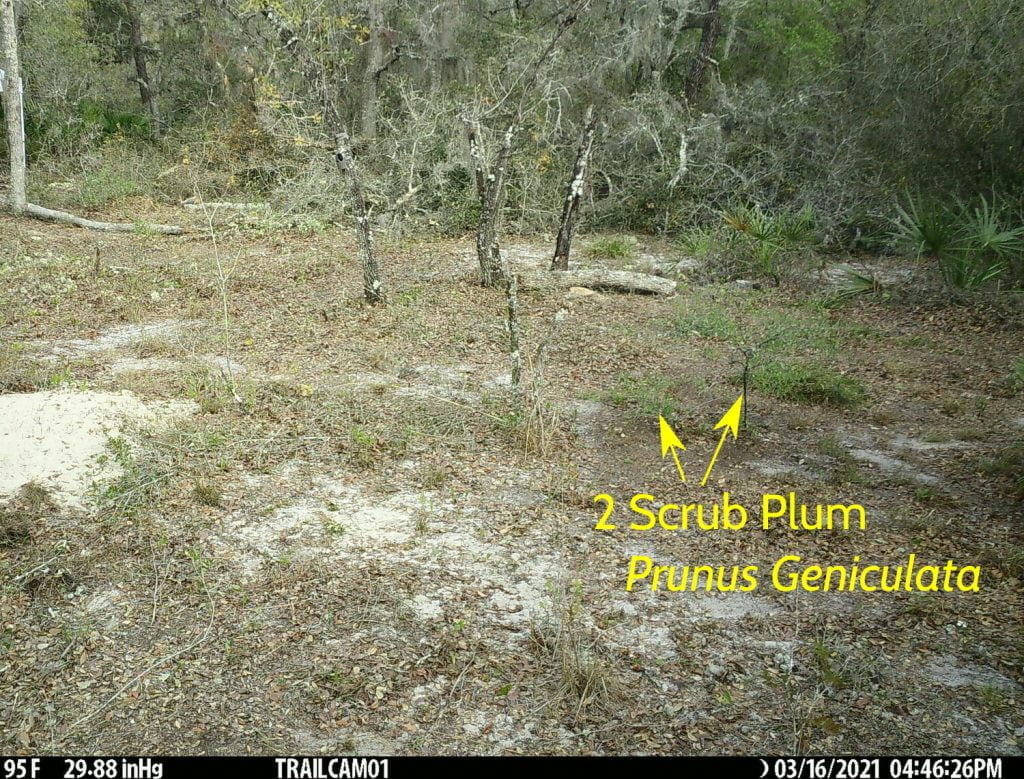
Multiple White-tailed deer frequent Johnny’s xeric upland sandhill Longleaf Pine and Turkey Oak forest, and devour several species including, but not limited to, running oaks such as Myrtle Oak, Sand Live Oak, Blueberries (vaccinium), and young shoots of Tough Bully (sideroxylon tenax), still without thorns. Deer also police several species which generate fruit at different times throughout the year, such as Gopher Apple, Sand Holly, Hog Plum, Blackberry, American Beautyberry, Muscadine Grapes, and of course their March favorite: Scrub Plums.
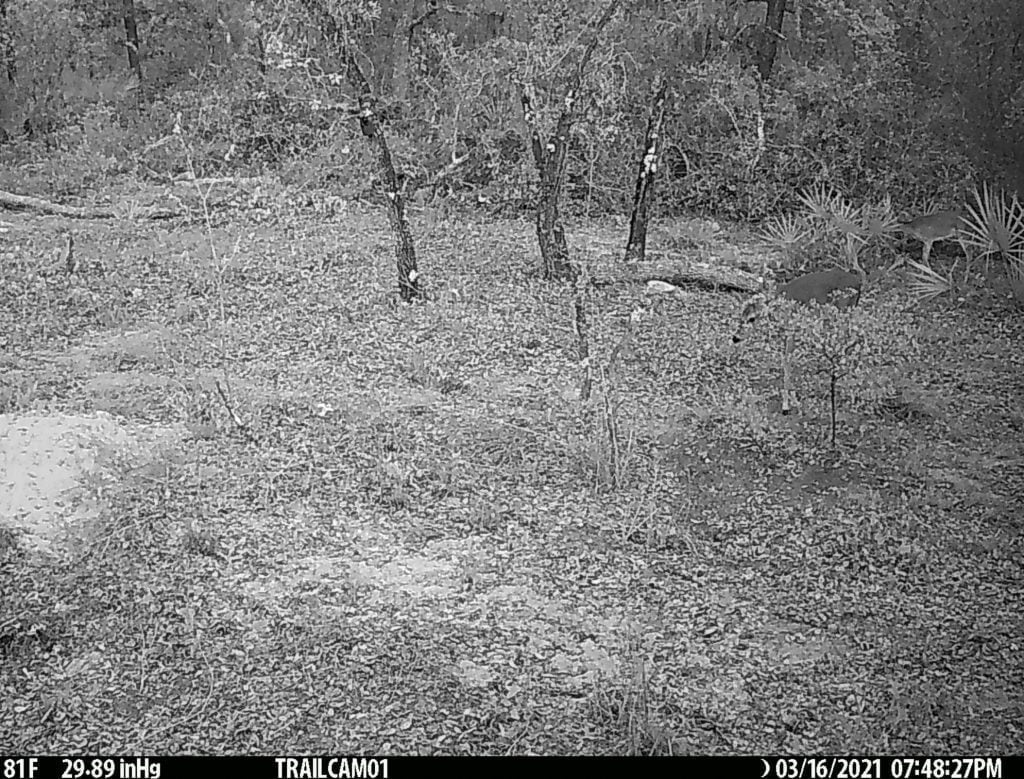
Through his ongoing Scrub Plum Life Study, Johnny observed many of the younger scrub plums, likely germinated from seed, seem to do so near to, and usually north of, a Saw Palmetto (serenoa repens) or Scrub Palmetto (serenoa etonia). Less often, a Scrub Plum seems to have germinated under or with a running oak, usually Sand Live Oak (quercus geminata).
It is suspected that the palmetto fronds give a specific level of filtered sunlight required for both germination and initial growth, which would not likely happen in wide-open, dry, sunny area. Further, it has been observed that the eventual death of the Scrub Plum’s palmetto frond would only benefit the plum, who might have full sun by the third season, or even simply outpace the growth of the palmetto. Finally, it was noted that the dead palmetto frond would make good fuel for a fire, which also benefits the Scrub Plum. Not only will Scrub Plum flower more profusely the season following a fire, the burn will also fight back running oaks and other Scrub Plum “invasives.” Johnny also believes fire might assist with lichen control on older ramets.
In these photos, both deer meander through and around palmettos, probably using it for cover as well as grazing. Any scat left behind, containing Scrub Plum, would be mixed into the various oak and palmetto litter at the base of the palmetto; an area which should contain the highest levels of moisture possible in this extremely dry habitat.
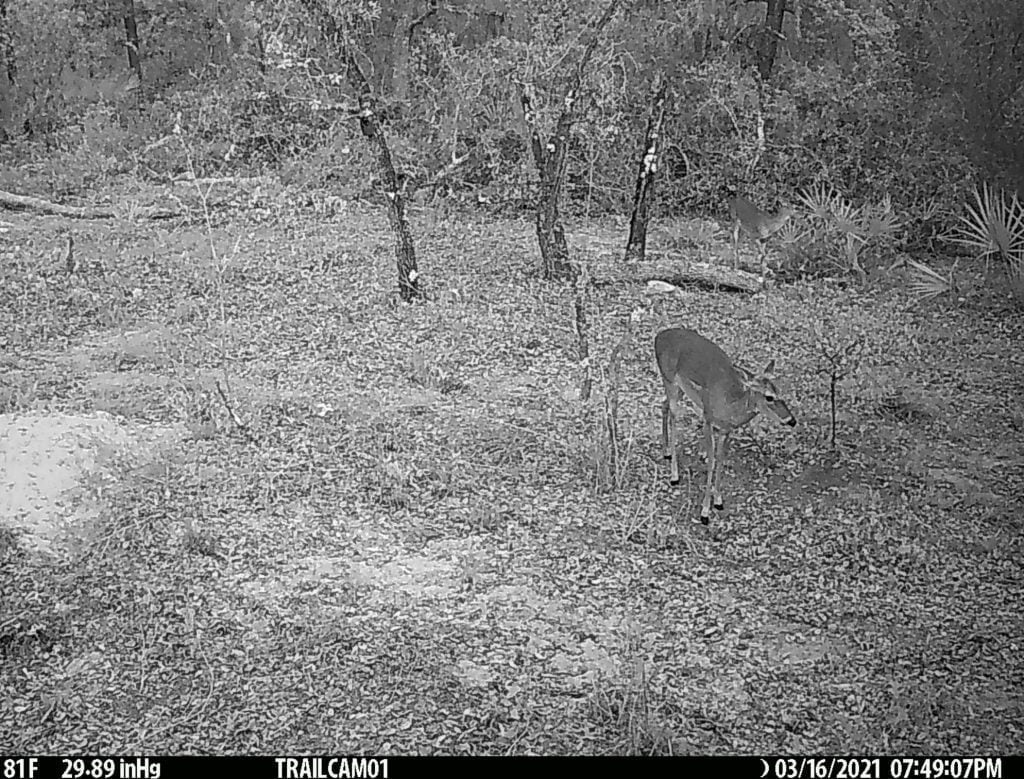
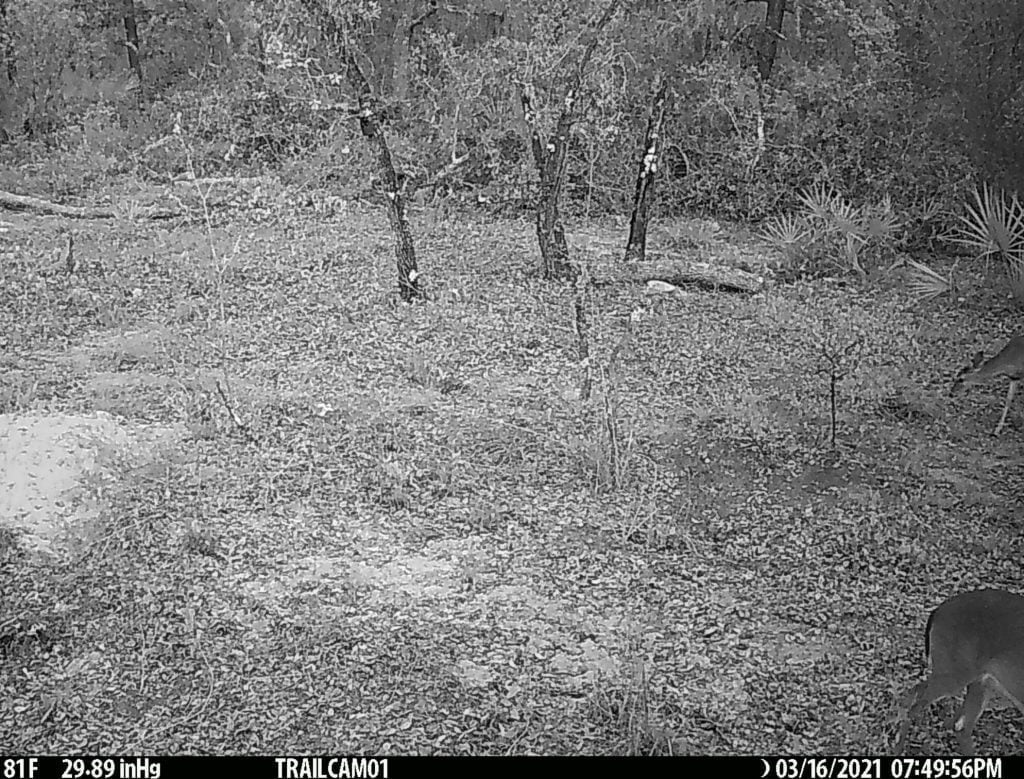
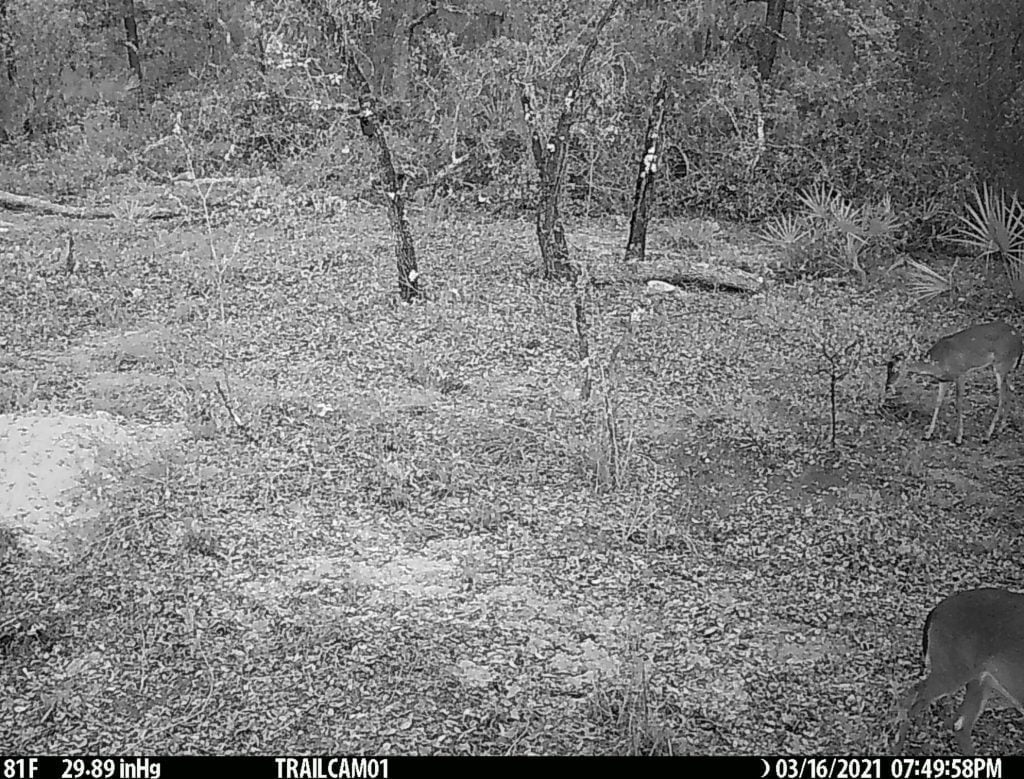
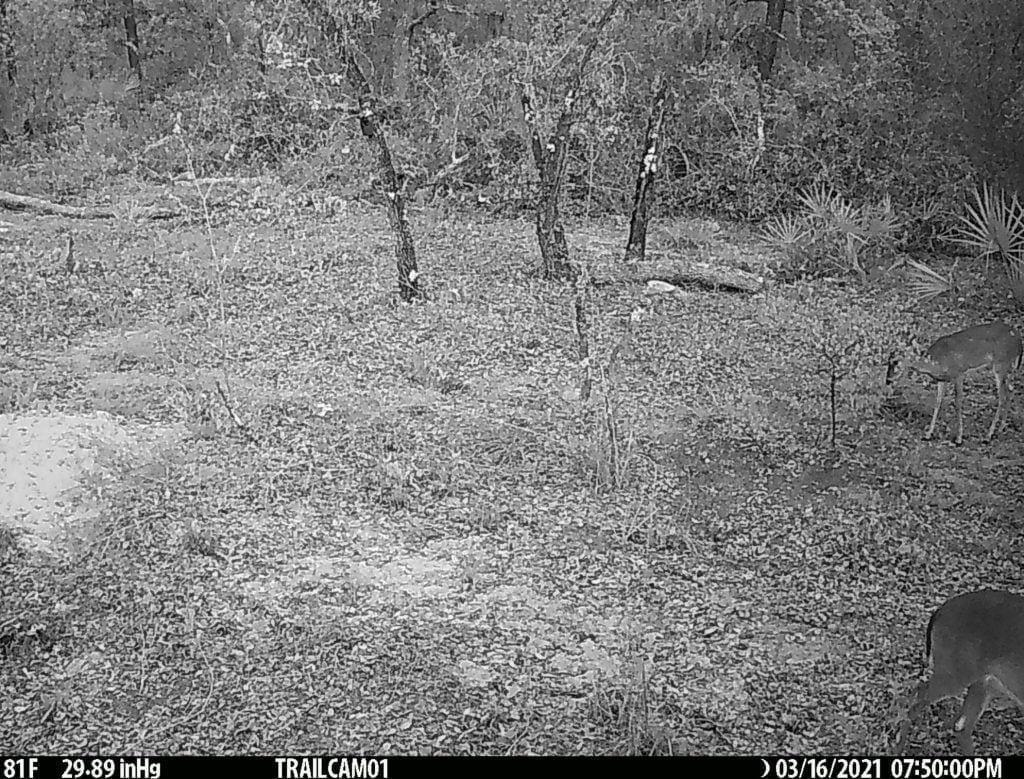
Here are the previous three photos combined into an animated GIF:
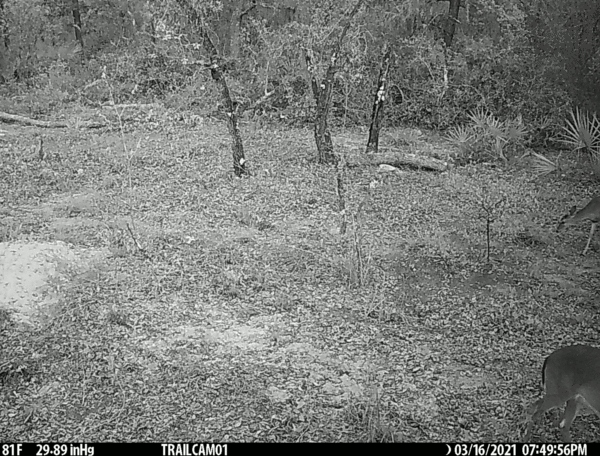
And while Johnny doesn’t think deer are the only species to disperse Scrub Plum, they are one of the main dispersers. Gopher Tortoises (gopherus polyphemus), Carpenter Ants (camponotus floridanus), and even beetles might also share the load by dispersing seeds far below the surface.
Johnny Butterflyseed’s careful investigation into some our most precious and endangered species has already led to very interesting data which will help restore these species to their rightful place, interconnected with all other species.
Day by day, Johnny is helping feed, care for, and restore, as many of God’s creatures as possible.. from Butterflies to Blowflies.
